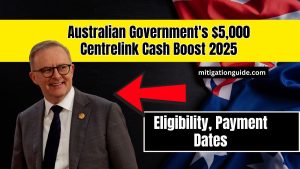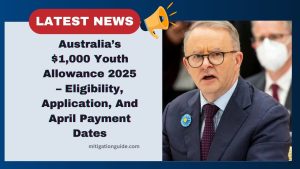In response to the increasing financial pressure on Australian households, the South Australian government has announced a double cost of living payment totaling $512 for eligible residents.
Known as the Double $256 Cost of Living Boost, this financial assistance program is designed to help low-income individuals, concession card holders, and pensioners deal with escalating expenses in 2025.
What is the Double $256 Cost of Living Boost?
This initiative provides two separate $256 payments, effectively offering $512 per eligible household as a one-time cash boost.
This relief measure comes amid rising costs for groceries, energy, and healthcare, aiming to ease the financial burden on South Australians who are most vulnerable to inflation.
Why This Boost Matters in 2025
With inflation remaining high, essential items have become more difficult to afford for those on fixed or limited incomes.
The Double $256 Cash Boost acknowledges this challenge and delivers direct support to affected households.
The initiative is also part of a wider Cost of Living Concession Program, reaffirming the government’s efforts to promote economic resilience and equitable relief during difficult financial times.
Payment Timeline and Key Deadlines
The payments are scheduled to be disbursed via Electronic Funds Transfer (EFT) between late August 2025 and early September 2025. However, eligible individuals must ensure their applications are submitted before the March 31, 2025 deadline.
Eligibility Requirements for the Boost
To ensure that the payment reaches those most in need, several eligibility conditions have been outlined:
| Category | Fortnightly Income Limit | Annual Income Limit |
|---|---|---|
| Single | $912.70 | $23,730.20 |
| Single with Dependents | $966.90 | $25,139.40 |
| Couple (Combined) | $1,696.60 | $44,111.60 |
Other conditions include:
- Residency: Must be a current resident of South Australia and either a permanent resident or Australian citizen.
- One Payment Per Household: The boost is limited to one payment per household to ensure fair distribution.
- Valid Concession Cards: Applicants must hold a Pensioner Concession Card, Commonwealth Seniors Health Card, or other recognized cards.
Application Process: How to Claim the $512 Cash Boost
The application process is designed to be simple and accessible:
- Automatic Eligibility: If currently receiving approved government payments, recipients may be automatically considered for the boost.
- Manual Applications: Others must apply online or via a government service center before the closing date.
- Required Documentation:
- Centrelink CRN or DVA file number
- Recent utility bills
- Proof of South Australian residency or citizenship
For assistance, applicants may reach out to designated helplines and service offices for guidance.
Expanded Support: Retirees and Renters Included
In an inclusive move, the South Australian government has also extended eligibility to self-funded retirees and renters.
These groups will now be eligible for the doubled concession, acknowledging their growing financial vulnerabilities.
Depending on the individual’s living situation and concession type, the Cost of Living Concession will offer $255.60 per person, now doubled to $511.20 or more.
The Double $256 Cost of Living Boost is a timely response to inflationary pressures, offering targeted relief to those who need it most.
With a streamlined application process, expanded eligibility, and scheduled payments in late 2025, this initiative underscores the government’s dedication to supporting financially vulnerable Australians.
Eligible households should act promptly before the March 31, 2025 deadline to secure their $512 benefit.
FAQs
Who is eligible for the Double $256 Cost of Living Payment?
Eligible residents must live in South Australia, hold a valid concession card, and meet the outlined income thresholds.
When will the Double $256 payments be made?
Payments are scheduled between late August and early September 2025 via direct bank deposit.
Can renters and retirees also receive the boost?
Yes, the program has been extended to include renters and self-funded retirees, depending on their eligibility and circumstances.




